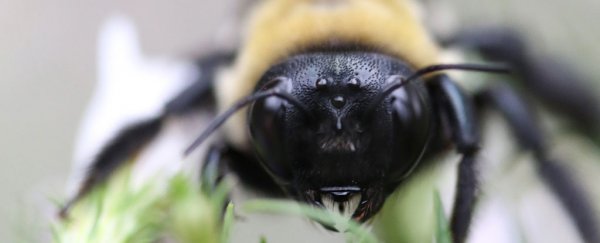Australia has a reputation for being a hotbed of deadly spiders, snakes, and jellyfish, but a new study shows that bees and wasps are not to be trifled with either, because they're actually Australia's most dangerous stingers.
The country's first national analysis of data on bites and stings reveals that bees and wasps send the most people to hospital each year, and contribute to the equal highest number of sting-related deaths.
A team led by public health researcher Ronelle Welton from the University of Melbourne analysed national coronial data from 2000 to 2013, when bites and stings resulted in almost 42,000 hospitalisations, including fatalities.
Among this, stings from bees, wasps, and hornets were responsible for 31 percent of hospital admissions, edging out bites from Australia's more infamous venomous predators – spiders (30 percent) and snakes (15 percent).
But while snake bites requiring hospitalisation may be significantly less common than stings and bites from bees, wasps, and spiders, they're no less deadly when it comes to causing fatalities – and in fact are the most lethal proportionally.
Between 2000 and 2013, 64 people were killed by a venomous sting or bite, with 27 fatalities due to snakes, and an equal number attributable to bees and wasps.
Even more remarkable, despite popular fears of Australian spiders – which are pretty well-warranted, given they sent almost 12,000 people to hospital during 2000 to 2013 – they're not ultimately as deadly as we might think they are.
During the study period, spider bites didn't cause a single fatality, which the researchers attribute to the success and availability of anti-venom treatments.
According to the team, the last documented death from a spider in Australia was a redback spider bite in 1999.
A 2016 fatality was also reportedly due to a redback bite, but the cause of death wasn't conclusive.
In terms of non-venomous animals causing death, again the perception of Australia's dangers doesn't meet up with reality.
While the coronial data shows that 19 deaths between 2000 and 2013 were due to crocodiles, and 26 deaths caused by sharks, the leading animal-related cause of death was a much less fearsome creature: horses.
In the period, 74 deaths were caused by horses trampling or throwing people – and encounters with dogs led to 23 fatalities.
But in terms of venomous creatures, the fact that so many deaths and hospitalisations are being caused by bees and wasps suggests that people might not realise how dangerous these stingers really are.
Of the 27 snake bite fatalities recorded in the study, about three-quarters of those bitten made it to the hospital alive, before later dying during treatment.
When it comes to bees and wasps though, only 44 percent of those who died made it to hospital alive, and the researchers think it's because they initially underestimated the danger – not realising how deadly sting-based anaphylaxis (severe allergic reaction) can be.
"Perhaps it's because bees are so innocuous that most people don't really fear them in the same way they fear snakes," says Welton.
"Without having a previous history of allergy, you might get bitten and although nothing happens the first time, you've still developed an allergic sensitivity."
Allergen sensitivity in Australia made headlines around the world last year, when eight people were killed and more than 8,500 hospitalised after a severe outbreak of thunderstorm asthma, brought on by a massive pollen dispersal following a storm.
The researchers hope their findings will help better inform people and health providers about the real risks posed by Australia's stingers and biters.
And at the same time, if the research can provide a little context – and help lay to rest some of the hyperbole and stereotypes swirling around the country's 'deadliest creatures' – that might not be a bad thing either.
"The biggest surprise is just how small the numbers are — from a national perspective, we get a lot of media hype on how dangerous [animals] are, but if you look at things like drowning, there was nearly 5,000 deaths in the same study period," Welton told Loretta Florance at ABC News.
"[S]o it's nothing to be alarmed about, just be prepared, make sure you understand your first aid, if you do have allergies or know someone who does."
The findings are reported in Internal Medicine Journal.
